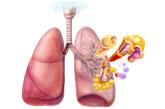Article

Asthma management: How the guidelines compare
- Author:
- Tanner Nissly, DO
- Jean Moon, PharmD
- Jason Ricco, MD, MPH
This quick guide details the similarities and differences between recommendations from the National Asthma Education and Prevention Program and...
Article
Treating UTIs in reproductive-age women—Proceed with caution
- Author:
- Jean Moon, PharmD
- Shailendra Prasad, MBBS, MPH
- Mari Egan, MD, MHPE
A new study suggesting that nitrofurantoin and sulfonamides are teratogenic highlights the need for a risk-benefit analysis when your patient is a...
